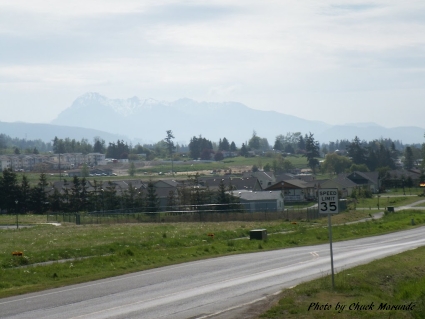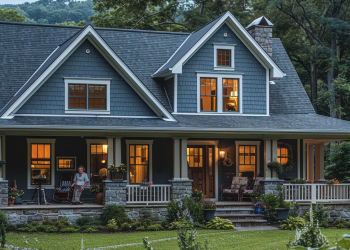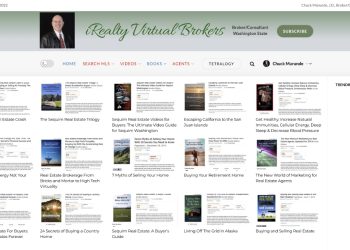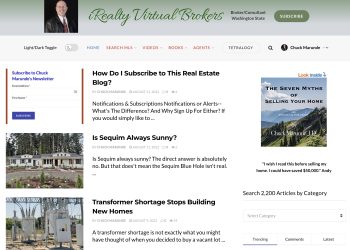Highway traffic noise can be a serious problem. If you are planning to buy a home in Sequim, it might behoove you to consider the source of highway traffic noise and the level of noise that you will also be buying. Excessive highway traffic noise that bombards your home 24 hours a day, 365 days a year can be like a headache that just won’t go away. Continued exposure to excessive noise interrupts your peace, causes your mind and body to experience constant stress, and can be a source of physical and mental fatigue. How can you make wise decisions about buying a home near a highway? That’s what this article is all about. First, if you are aware of the danger, you are halfway there. Second, if you understand something about what causes highway traffic noise to be louder in some locations, you can discern what locations might be less attractive.
Highway Traffic Noise
Highway 101 cuts through Sequim, and this is our “freeway.” The traffic screams by homes at 60 miles per hour, including cars, motorcycles, and 18-wheel trucks with heavy loads, and the traffic never stops. The Sequim-Dungeness has the second highest traffic count followed by the Old Olympic Highway, and Woodcock, Kitchen-Dick, Cays Road, and so on. There are many homes for sale along these busy traffic routes, but noise does not travel with equal frequency. Two homes a mile apart, both the same distance from a busy highway may have substantially different noise levels. At one home the noise is obnoxiously loud. At the other home the highway traffic noise is muffled.
The Source of Highway Traffic Noise
According to the Washington Department of Transportation, the level of highway traffic noise depends on three things:
- Traffic volumes – Roads with more vehicles are generally louder,
- Traffic speeds – Traffic is louder at higher speeds, and
- The volume of heavy trucks on the road – Semi-Trucks.
Highway traffic noise is a combination of the noises produced by vehicle engines, exhaust, and tires. Traffic noise is increased by defective mufflers or other faulty equipment. Conditions, like a steep incline, that causes heavy laboring of vehicle engines will increase traffic noise levels. Other factors complicate the loudness of traffic noise. For example, traffic noise levels are reduced by distance, terrain, vegetation, and natural and man-made obstacles.
Highway Traffic Noise Varies by Location
Having shown hundreds of homes around every heavily traveled highway in the Sequim and Port Angeles areas, I have observed some locations are substantially worse because they are located where the traffic noise carries in a narrow valley and projects itself directly to a certain location on a hillside like a line-of-sight radio wave. Sitting on your back deck trying to enjoy a family barbeque with the constant barrage of loud semi-trucks blasting along on a highway a quarter mile away can be more than annoying.
The Washington DOT gives some excellent guidance on this subject, but they do make a major mistake when they state that, “Traffic noise is not usually a serious problem for people who live more than 500 feet from heavily traveled freeways or more than 100-200 feet from lightly traveled roads.” I have stood on property as far away as half a mile and you would think you were standing right next to a freeway. As they say in real estate, it’s all about location.
Some traffic noise is almost inevitable, unless you are way out of town, and in most homes the traffic noise is muffled or not even noticeable inside the home. But if you like to open your windows from time to time, it sure is nice not to have to suffer a lot of highway traffic noise.
Last Updated on September 16, 2013 by Chuck Marunde

































